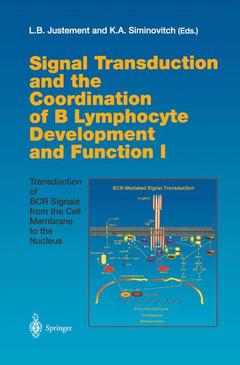Signal Transduction and the Coordination of B Lymphocyte Development and Function I, 2000 Transduction of BCR Signals from the Cell Membrane to the Nucleus Current Topics in Microbiology and Immunology Series, Vol. 245/1
Coordonnateurs : Justement Louis B., Siminovitch Katherine A.

Includes supplementary material: sn.pub/extras
Date de parution : 10-2012
Ouvrage de 267 p.
15.5x23.5 cm
Disponible chez l'éditeur (délai d'approvisionnement : 15 jours).
Prix indicatif 105,49 €
Ajouter au panierThèmes de Signal Transduction and the Coordination of B Lymphocyte... :
Mots-clés :
Activation; Antigen; cell; cell biology; cell membrane; cytoskeleton; gene; gene expression; lymphocytes; membrane; protein; proteins; regulation; signal transduction; transcription



